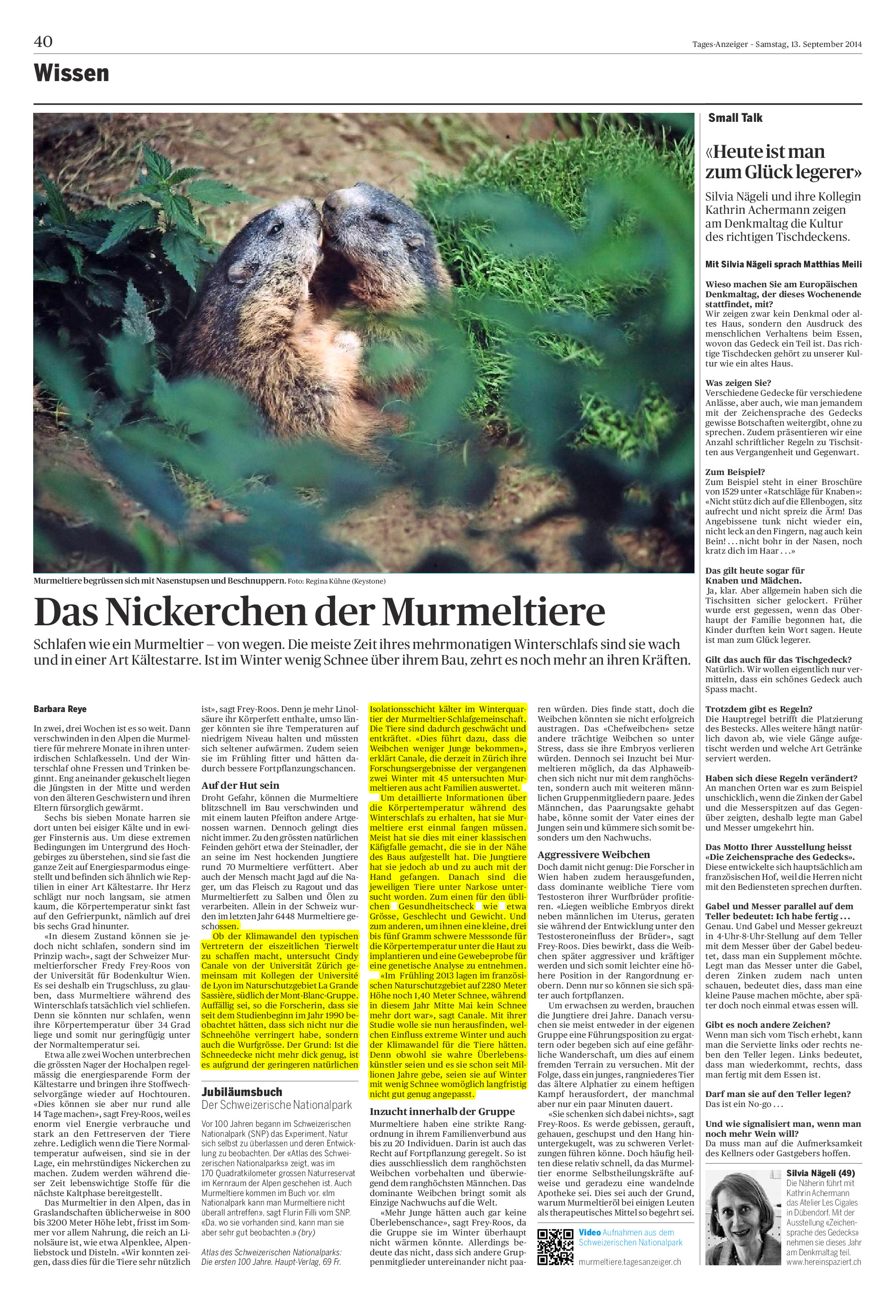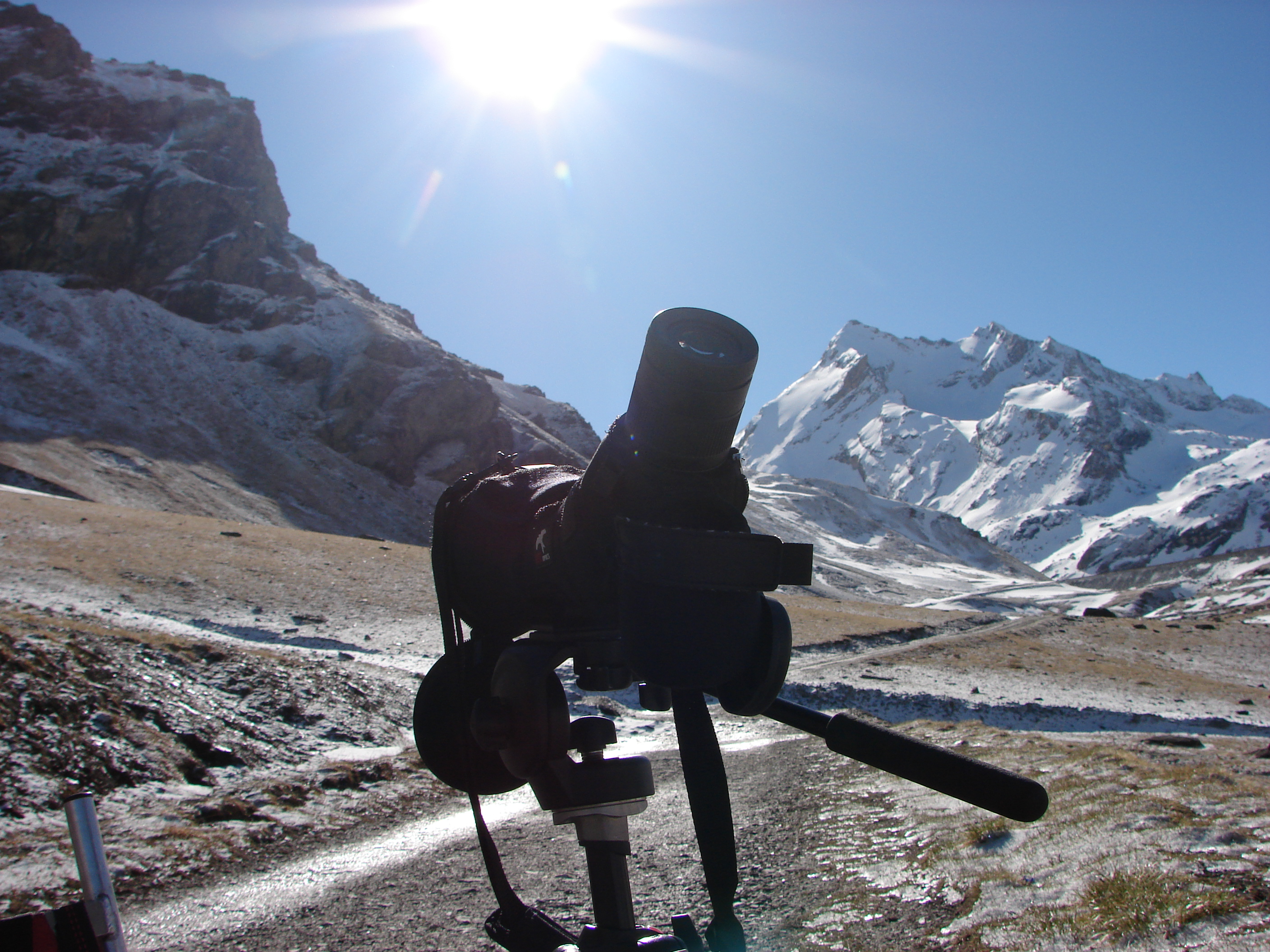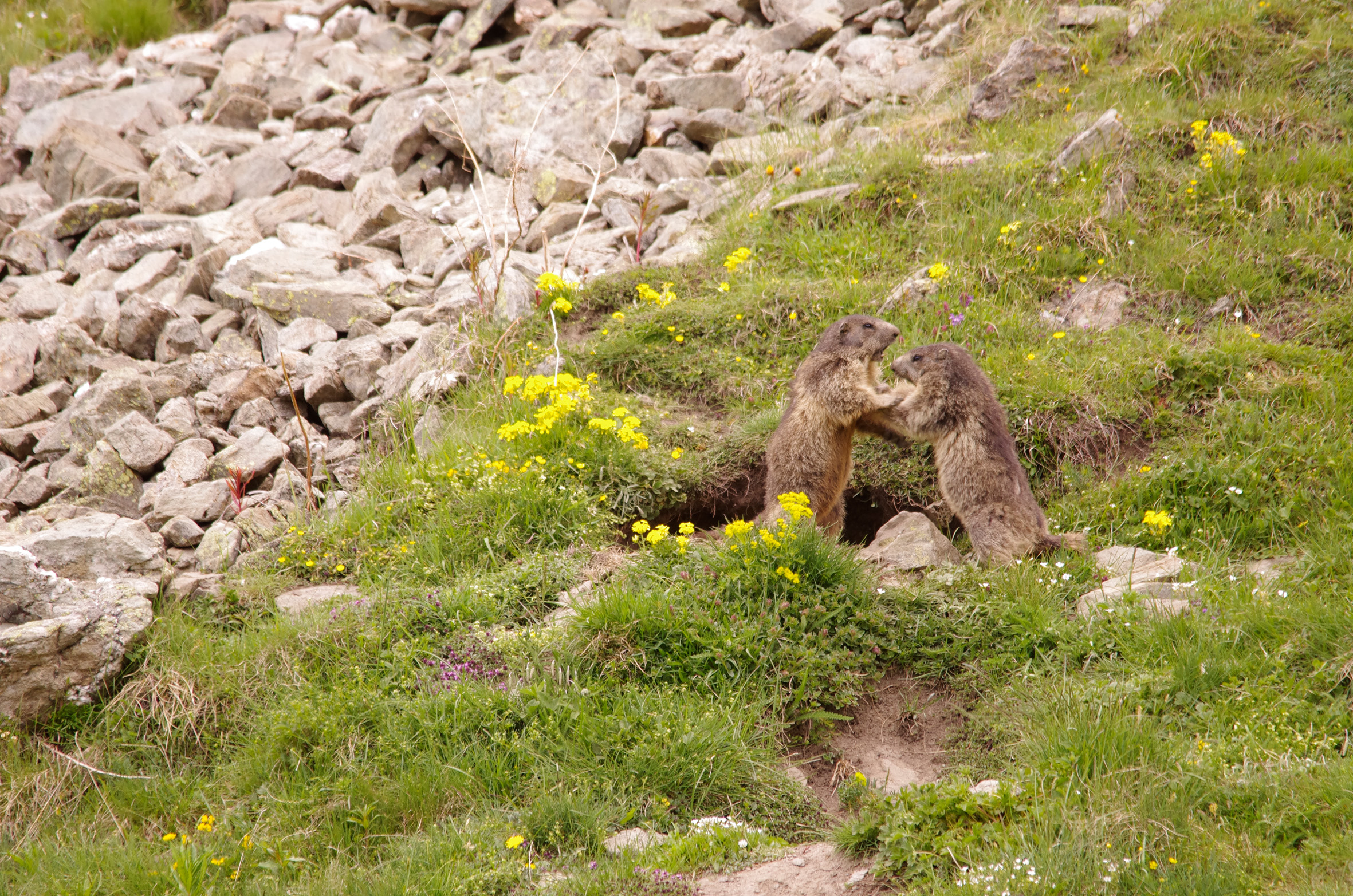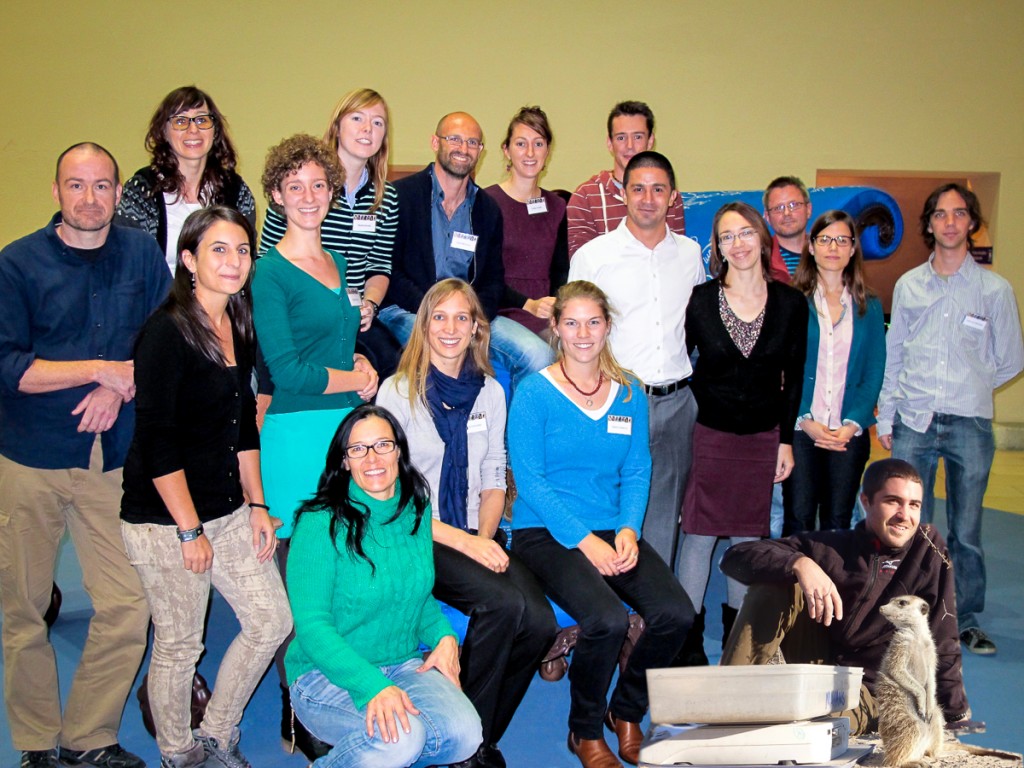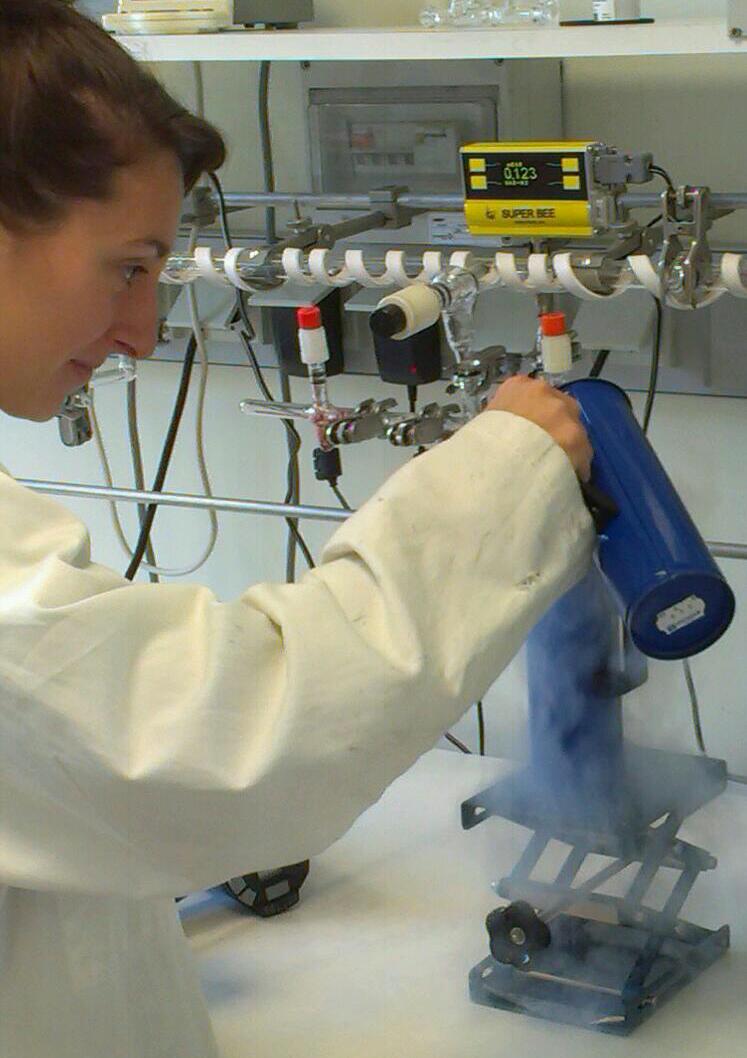Cindy
Second field season started at the Alpine Marmot Project
Welcome back to the Natural Reserve of La Grande Sassière where the second field season on alpine marmots started 3 weeks ago. Whereas last year at the same period there was deep snow (1m40), we arrived in an almost snow-free area.
As some of you enjoyed the mild winter, it seems that the marmots did too. Survival rate of the juveniles has never been that good: we already caught 90% of them! Even the lightest one, that was 165g last year survived: it is now 900g and it is running and playing all around with its 4 brothers and sisters!
To deal with energy limitation, individuals have to adjust their energy balance (energy acquisition vs. energy expenditure) to maintain their homeostasis and maximize their fitness. Among all mechanisms, thermoregulation represents the highest energetic cost in endotherms. My research project focus on the role of hibernation in the life history of the marmot. To understand how hibernation patterns are adjusted to environmental conditions, we are following the body temperature of 33 individuals since May last year with loggers placed in the intra-abdominal cavity. We already caught 20 of them. Cannot wait to download the data from these loggers! Some preliminary results below… Looks great, does not it!
Have a look to our blog in 3 weeks to know how the field session ended, and come back in few months to know more about the mechanisms underlying critical trait-demography relationships of the Alpine Marmot!
When Claude meets Charles…
“Claude Bernard and Charles Darwin, two geniuses from 19th century, initiated each in their own way and from disjoint areas, the contemporary biological revolution.
Physiological ecology is born from the convergence of their views and now evolves since the appropriation of the news tools such as molecular and cell biology, proteomics, ecotoxicology and isotopic chemistry. The main purpose of this biological discipline is to integrate physiological processes in the ecology and evolution concepts.” website
This is what drives me to Lyon (France) the last week to participate to the 1st Symposium of Animal Physiological Ecology.
It was a really interesting meeting with scientific talks of high quality.
Different topics have been discussed showing the multidisciplinarity of Physiological Ecology:
– Adaptations to extreme conditions
– Anthropogenic stress
– Behavior
– Genome, allocation, life history traits
– Pathogenesis and Parasites
– Physiological Ecology and Conservation
I gave a talk on the importance of physiological flexibility in a changing world and hope to present data on alpine marmots in 2 years at the 2nd Symposium of Animal Physiological Ecology!
Are the marmots fat or muscled?
While some are tracking meerkats in South Africa, others are developing complex models in Zurich, I was doing laboratory work at the “Institut Pluridisciplinaire Hubert Curien” in collaboration with the Evolutionary EcoPhysiology Team (Strasbourg, France).
No, no,no, I am not playing with liquid nitrogen for fun…
I am doing cryo-distillation to isolate water from biological fluids (here blood samples).
You probably wondering: What? or Why ? I would answer because we want to demonstrate that:
In other words, we want to validate the bioelectrical impedance analysis (BIA) by the deuterium dilution method to measure the body composition of marmots.
The bioelectrical impedance measurement is a non invasive method to estimate body composition and in particular body fat by determining absolute fluid volumes. It is doing exactly the same than the new scale you have at home! It is based on the fact that an electric current is conducted poorly by fat and bone but conducted well by tissues containing electrolytes and water.
BIA has been used in a number of species to evaluate total body water and thus body composition, including humans, cats, harbor seals, bear, dogs, pigs, horses but never used in marmots before.
So to ensure that this method is also appropriate in marmots, we evaluate the total body water by deuterium concentrations in condensed water from blood sample.
For more informations, you can read:
Kyle UG, Bosaeus I, De Lorenzo AD, Deurenberg P, Elia M, Gómez JM, Heitmann BL, Kent-Smith L, Melchior J-C, Pirlich M (2004). “Bioelectrical impedance analysis—part I: review of principles and methods.” Clinical Nutrition 23(5): 1226-1243. pdf
Eco-evolutionary Dynamics Workshop in Leiden
 This week, Cindy and I participated in the “Eco-evolutionary Dynamics in a Changing World” workshop at Lorentz Center, Leiden.
This week, Cindy and I participated in the “Eco-evolutionary Dynamics in a Changing World” workshop at Lorentz Center, Leiden.
The organisers, Stephanie Jenouvrier, Thomas Reed and Marcel Visser, brought together a select group of researchers working at the interface of ecology and evolution, from both theoretical and empirical backgrounds, to brainstorm on our current understanding of eco-evolutionary dynamics. Unlike most other workshops, this one had quite an interesting format. There were only a few plenary talks, and most of the time participants held smaller break-out sessions on their own research area. Although there were no final road-maps or even a clear definition of eco-evolutionary semantics, these break-out sessions, I think, worked very well for tossing around ideas and discussing more specialised topics among those with shared interests. For our part, we received great input on our two projects.
Cindy receives the AXA Research Fellowship
 Congratulations to Cindy Canale, for receiving the prestigious and well-deserved AXA Postdoctoral Research Fellowship for her project on adaptive responses of Alpine marmots to environmental change.
Congratulations to Cindy Canale, for receiving the prestigious and well-deserved AXA Postdoctoral Research Fellowship for her project on adaptive responses of Alpine marmots to environmental change.
Cindy Canale, our new eco-physiologist
 Together with Dr. Aurelie Cohas and Prof. Dom Allain (University of Lyon), who have been working on an Alpine marmot population in French Alps for over 20 years, we have been thinking on a research plan to investigate the physiological, behavioural and demographic responses of the rotund rodents to environmental change. All we needed was an eco-physiologist, who would help us to better understand the hibernation physiology, and Dr. Cindy Canale stepped on to the scene. Cindy wrote an excellent fellowship proposal, all the while chasing lemurs in Madagaskar, and we just learned that she won the prestigious Marie Curie Postdoctoral Award. She is joining our ranks in February. A big welcome to our group and congratulations for the well-deserved award!
Together with Dr. Aurelie Cohas and Prof. Dom Allain (University of Lyon), who have been working on an Alpine marmot population in French Alps for over 20 years, we have been thinking on a research plan to investigate the physiological, behavioural and demographic responses of the rotund rodents to environmental change. All we needed was an eco-physiologist, who would help us to better understand the hibernation physiology, and Dr. Cindy Canale stepped on to the scene. Cindy wrote an excellent fellowship proposal, all the while chasing lemurs in Madagaskar, and we just learned that she won the prestigious Marie Curie Postdoctoral Award. She is joining our ranks in February. A big welcome to our group and congratulations for the well-deserved award!


